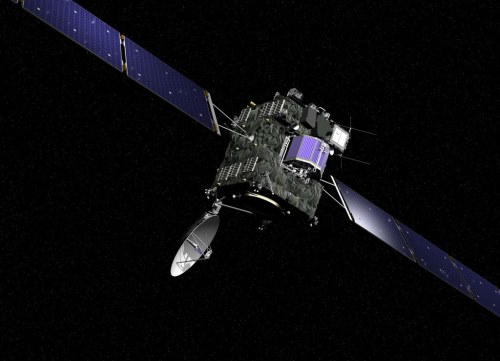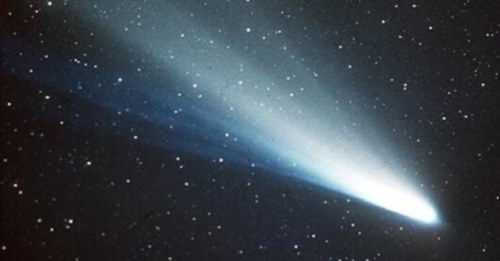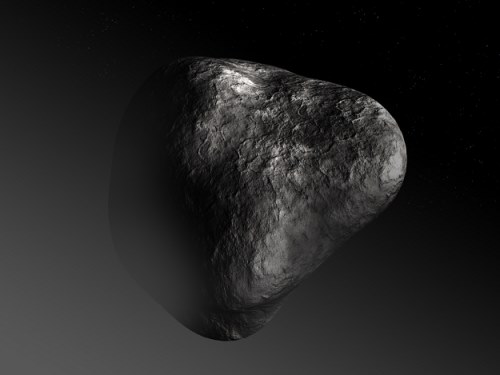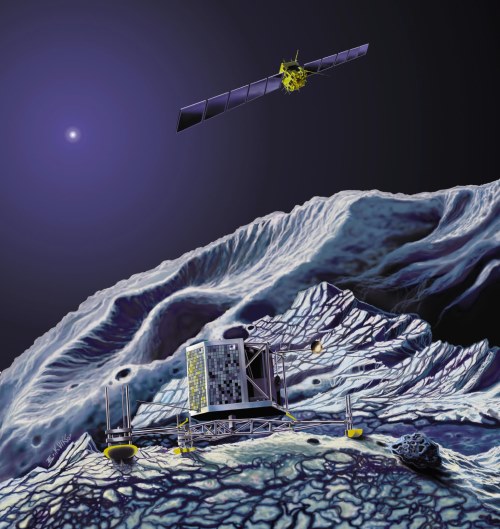In June 2011, the European Space Agency’s (ESA) Rosetta spacecraft reached a dead end as it approached about 500 million miles away from the sun, near Jupiter’s orbit where the solar-powered craft would not receive enough sunlight to repower.

Rosetta spacecraft. (Image via ESA)
So, its creators on Earth put it to sleep.
After being inactive for almost three years in order to save energy, Rosetta woke up and is now ready to undergo its $1-billion mission.
Rosetta notified ESA scientists in Germany that it was ready to get up-close-and-personal with the 67P/Churyumov-Gerasimenko comet. The message reached Earth at 7:18 p.m. Central European Time (1:18 ET). It also set off a pre-programmed tweet that said, “Hello, world!”
The planned sleep was scheduled to end about 40 minutes earlier so mission specialists were a bit on-edge while anticipating communication.
Rosetta is still 5.6 million miles away from this comet, but by November will release a probe to land on it.

The goal is to get up-close-and-personal with a comet. (Image via Illinois State University)
“With Rosetta, we will take comet exploration to a new level. This incredible mission continues our history of ‘firsts’ at comets, building on the technological and scientific achievements of our first deep space mission Giotto, which returned the first close-up images of a comet nucleus as it flew past Halley in 1986,” said Alvaro Giménez, ESA's Director of Science and Robotic Exploration.
All other comet missions have been flybys. This will be the first space mission to ever engage with a comet, first to attempt to land on a comet, and the first to follow a comet that’s swinging around the sun.

Artist's impression of the nucleus of comet 67P, portrayed far from the Sun with little to no activity.
(Image via ESA–C. Carreau)
The first images of 67P/Churyumov-Gerasimenko are expected in May when Rosetta is a bit closer. It will then spend two months mapping the comet’s surface to prepare for probe landing.

Artistic image of Rosetta’s probe landing on the comet while Rosetta orbits. (Image via ESA)
Along with a wide variety of scientific measurements that the probe will send back, it will also send a panorama of its surroundings, very-high-resolution pictures of the surface, and will perform an on-the-spot analysis of the composition of the ices and organic material (including drilling down to 23 cm below the surface and feeding samples to on-board laboratory for analysis).
Stay tuned for images to come from Rosetta's journey.
Advertisement
Learn more about Electronic Products Magazine





